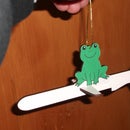Introduction: Shape Your Business Cards
Business cards are useful, but the two thousand which arrived for me had been chopped into oblongs.
The corner points make it harder than necessary to slip them into a credit-card sized pocket in a wallet, and the corners are prone to damage, which leaves an unprofessional impression.
Solution:- round off the corners to make the profile the same as a credit-card.
Take a pair of scissors and trim a quadrant from the corner of a card. Then realise how much work is going to be involved and look for an easier way. See below!
Step 1: Rounded Corners
I have a corner punch which chops a little piece from a corner of paper leaving a rounded corner. I can't find an current supplier for this item, but one which performs a similar job is here.
Take a scrap business card and clip all four corners to round them off.
Wonderful! But after that practice there is a stack of two thousand to do, which equates to eight thousand separate clippings.
Take the one card which has been rounded off by the punch and use a black Sharpie (other felt-tip pens are available) to mark all four corners with a thin line as shown in the last photograph.
Step 2: Make Holder Block
Take a thin piece of scrap plywood (1/8" or 4mm is about right) and check that there is one side which is dead straight.
Using a square, mark a right-angle from the middle of this straight side and then cut along that line, marking both pieces to show which corner is the "official" square end.
Using double-sided tape, stick the template card onto one of the pieces of wood, with two edges of the card hard against the two square edges of the plywood. I used a wallpaper seam roller to get it hard onto the tape, but just pressing with fingers is probably enough.
Stack the two pieces of plywood with the good corner of each in the same orientation, and then cut to size, leaving a little bit of spare around the two sides of the template card.
Step 3: Sand Corners
Stack the two pieces of plywood with a couple of hundred business cards between them.
Be very careful to align the cards with the two good sides of the plywood and with the square corner. This is the most crucial stage of the whole exercise, so take your time.
Squeeze the stack of ply and cards together with speed-clamps. Once we've started removing material we will need to move the clamps around, so using three clamps means that two can hold everything solid while one is moved at a time.
The clamps should be placed so that one of the four corners of the block is unhindered by clamps as shown in the fourth photograph above. Also, if there is a long tail from the clamp, then arranging it so that one of the three is on the opposite side to the other two will give a better balance.
Using a belt sander, offer the exposed corner to the abrasive, and gently remove the point from the corner. The black line applied to the template in the previous step makes it easier to see where we need to stop removing material.
The belt will tend to "grab" material which is driven down onto it, so half-way through the rounding-off, turn the block around and attack the same corner from the other direction.
Once you're happy with the shape you have on that corner, move the clamps one at a time (as shown in photographs 5, 6, 7 and 8 above) to keep a solid grasp on the block while exposing a second corner ready for work.
Rinse and repeat, so that all four corners are rounded nicely and the result is nicely shaped cards as shown in the first photograph above.
Step 4: Other Shapes and Problems
Good luck with making your cards look nicer.
Flushed with the success of my first batch, I re-used the same plywood templates to make further batches.
This is adequate, but you will get a better finish with fresh wood each time. When the cards are being sanded down and the paper is proud of the wood, then the paper smears out and it takes a bit of work with a hand sanding block to tidy it up.
I then tried to make a concave shape, but removing material from the top edge of a batch of cards. This involved offering the long edge of a block of cards to the end-curve on the belt sander. This experiment was not a great success. I do think that it is possible to shape cards in an interesting fashion, but this method produces an uneven result, certainly when I try it.
I then had another "bright" idea to put holes through a batch of cards. I used a 10mm Forstner bit to drill through the stack on a drill press. This was an unmitigated disaster. I was holding the stack together by hand, and it wrenched apart under the stress of drilling. It might be possible to get this technique to work with very strong clamping pressure, but my hopes would not be high. Do let me know if you manage it!













